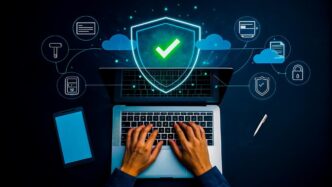Executive Summary
The Story So Far
Why This Matters
Who Thinks What?
The proliferation of Software-as-a-Service (SaaS) applications has fundamentally reshaped how businesses operate, offering unparalleled agility, scalability, and cost efficiency. However, this widespread adoption introduces a complex web of security challenges that demand rigorous attention from every organization, regardless of size or industry. Companies worldwide are increasingly grappling with the critical task of protecting sensitive data and maintaining operational integrity within these cloud-hosted environments, necessitating a proactive and sophisticated approach to outsmart evolving cyber threats. Understanding the shared responsibility model and implementing robust security measures are paramount to safeguarding digital assets against a constantly shifting threat landscape.
The Ubiquitous Rise of SaaS and its Security Implications
SaaS models have become the backbone of modern enterprise operations, from customer relationship management (CRM) and enterprise resource planning (ERP) to collaboration tools and human resources platforms. This shift from on-premise software to cloud-delivered services empowers businesses to innovate faster and reduce IT overhead. Yet, it also extends the traditional security perimeter, introducing new vulnerabilities and complexities.
While SaaS providers secure their underlying infrastructure, the responsibility for securing the data and configurations within the application largely falls on the customer. This shared responsibility model is often misunderstood, leading to critical security gaps. The ease of deployment and accessibility of SaaS applications can sometimes overshadow the imperative for diligent security practices, making companies susceptible to various cyberattacks.
Understanding the Shared Responsibility Model
A cornerstone of effective SaaS security lies in clearly defining and understanding the shared responsibility model. The SaaS provider is typically accountable for the security of the cloud, encompassing the underlying infrastructure, operating systems, network controls, and the application code itself. This includes physical security, hardware, and the software stack up to the application layer.
Conversely, the customer is responsible for security in the cloud. This critical domain includes data classification, access management, configuration of the SaaS application, endpoint protection for devices accessing the service, and user awareness. Misconfigurations, weak access controls, and inadequate data handling by the customer are among the most common vectors for breaches in SaaS environments.
Common Threats Facing SaaS Environments
SaaS platforms, by their very nature, present attractive targets for cybercriminals. The centralized storage of valuable data and the interconnectedness of services create a fertile ground for various attack types. Organizations must be acutely aware of these prevalent threats to develop effective countermeasures.
Data Breaches and Leakage
Data breaches remain a top concern, often stemming from misconfigured access controls, insecure APIs, or insider threats. Sensitive customer information, intellectual property, and financial data can be exposed, leading to severe reputational damage, regulatory fines, and financial losses. Data leakage can occur through negligence, such as accidentally sharing files publicly, or malicious intent.
Account Takeovers (ATOs)
Attackers frequently target user credentials through phishing, credential stuffing, or brute-force attacks to gain unauthorized access to SaaS accounts. Once an account is compromised, attackers can access sensitive data, impersonate users, or pivot to other systems. Weak passwords and the absence of multi-factor authentication (MFA) significantly increase the risk of ATOs.
Insider Threats
Whether malicious or negligent, insiders pose a significant risk to SaaS security. Employees with legitimate access can intentionally exfiltrate data, or inadvertently cause breaches through careless actions like clicking phishing links or misconfiguring settings. Robust monitoring and access controls are essential to mitigate this risk.
Configuration Errors
One of the most common vulnerabilities arises from improper configuration of SaaS applications. Default settings, overly permissive access policies, and unchecked public sharing options can inadvertently expose vast amounts of data. Organizations must meticulously review and harden their SaaS application settings to align with security best practices.
Compliance and Regulatory Risks
Failure to adequately secure SaaS applications can lead to non-compliance with industry regulations like GDPR, HIPAA, CCPA, and PCI DSS. Breaches or improper data handling can result in substantial fines and legal repercussions, underscoring the necessity of a stringent security posture.
Pillars of a Resilient SaaS Security Strategy
Outsmarting SaaS threats requires a multi-layered, proactive security strategy that addresses both technical vulnerabilities and human factors. Companies must implement a comprehensive framework to protect their digital assets effectively.
Robust Identity and Access Management (IAM)
Implementing strong IAM practices is fundamental. This includes mandating Multi-Factor Authentication (MFA) for all users, deploying Single Sign-On (SSO) to centralize access, and enforcing the principle of least privilege. Users should only have the minimum access necessary to perform their job functions, reducing the attack surface.
Comprehensive Data Protection
Data must be protected throughout its lifecycle. This involves ensuring data is encrypted at rest and in transit, implementing Data Loss Prevention (DLP) solutions to prevent sensitive information from leaving controlled environments, and conducting regular backups. Data classification helps prioritize protection efforts for the most critical information.
Continuous Security Configuration Management
Organizations must regularly audit and review their SaaS application configurations. This includes disabling unnecessary features, hardening default settings, and ensuring that access policies are correctly applied. Automated tools can help identify and remediate misconfigurations promptly, maintaining a strong security baseline.
Cloud Access Security Brokers (CASBs)
CASBs act as a gatekeeper between users and cloud applications, extending an organization’s security policies to the cloud. They provide critical visibility into SaaS usage, enforce data security policies, protect against malware, and ensure compliance. CASBs are instrumental in gaining control over shadow IT and unapproved SaaS usage.
Security Awareness and Training
The human element remains the weakest link in many security chains. Regular, engaging security awareness training is crucial to educate employees about phishing, social engineering, and safe SaaS usage practices. A well-informed workforce is a powerful defense against many common cyberattacks.
Rigorous Vendor Due Diligence
Before adopting any new SaaS solution, organizations must conduct thorough security assessments of potential vendors. This includes reviewing their security certifications (e.g., SOC 2, ISO 27001), incident response plans, and data handling policies. A vendor’s security posture directly impacts an organization’s overall risk profile.
Proactive Monitoring and Incident Response
Continuous monitoring of SaaS logs and user activities is essential for early detection of anomalous behavior or potential threats. Integrating SaaS security alerts into a broader Security Information and Event Management (SIEM) system provides a holistic view. A well-defined incident response plan is critical for quickly containing and remediating any security breaches.
Building a Security-First Culture
Ultimately, outsmarting threats requires more than just technology; it demands a fundamental shift towards a security-first culture within the organization. Every employee, from the executive suite to frontline staff, must understand their role in maintaining security. This collective responsibility fosters an environment where security is integrated into daily operations and decision-making, rather than being an afterthought.
Securing SaaS environments is an ongoing, dynamic process that requires constant vigilance and adaptation. By embracing a multi-layered approach encompassing robust IAM, comprehensive data protection, diligent configuration management, strategic use of CASBs, and continuous user education, companies can significantly bolster their defenses. A proactive stance, coupled with a deep understanding of the shared responsibility model, empowers businesses not just to react to threats, but to truly outsmart them, safeguarding their critical assets in the cloud-first era.








